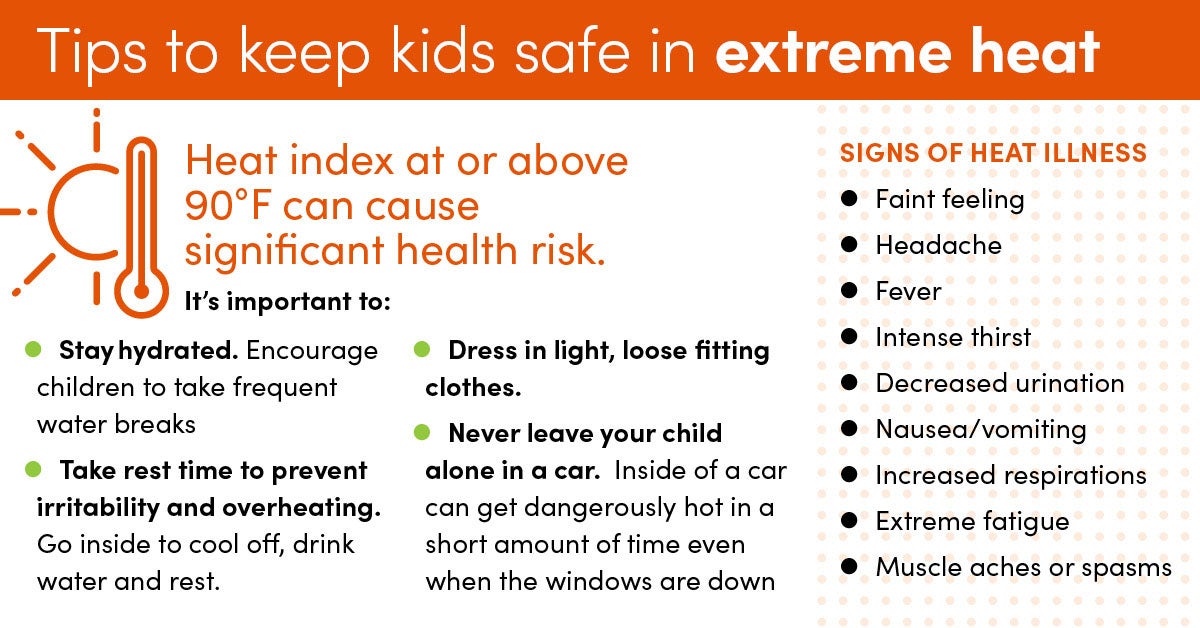
Overview: Enjoy warmer temperatures by being prepared. You can prevent heat exhaustion or heat stroke by staying hydrated, spending time in cool areas and dressing appropriately.
During the warmest months of the year, especially in the Midwest, going outside can feel like walking into a hot, thick wall. For your health and for those around you, it’s important to know how to prevent heat illnesses.
Heat exhaustion vs. heat stroke
While both heat exhaustion and heat stroke are experiences you want to avoid, one is more serious than the other.
Heat exhaustion symptoms include:
- Sweating.
- Feeling weak.
- A fast or weak pulse.
- Dizziness.
- Nausea.
If someone is experiencing heat exhaustion, bring them to a cool area, provide cold compresses and slowly give them water. If their symptoms worsen, call 911 and bring them to the emergency department.
- Clammy (no or some sweating).
- A rapid or weak pulse.
- Headache or dizziness.
- Nausea.
- Confusion.
- Unresponsiveness.
If someone is experiencing a heat stroke, their body is unable to cool itself down and can stop working. For heat stroke, you need to call 911 immediately and take them to the emergency department. Heat strokes can be fatal.
How to avoid a heat stroke
When extreme heat is in the forecast, here’s how you can prepare and stay safe.
- Dress for the heat. Wear light-colored and lightweight clothes that are breathable and wick away moisture. Examples include cotton, nylon, polyester and rayon.
- Stay hydrated. Since your body is 60% water, it’s important to stay hydrated, but especially in the heat because you’ll be sweating more. A quick way to check if you’re hydrated is if you’re urinating and the color of your urine. Pale yellow urine means you’re hydrated, but if it’s dark, you need to drink more water or eat water-rich foods like cucumbers, watermelon and celery.
- Split outdoor and indoor time. It’s important to go inside and out of the sun and heat if you’re experiencing any symptoms of heat exhaustion or heat stroke.
- Wear sunscreen. You should wear sunscreen anytime you are outdoors. Use a broad-spectrum sunscreen with at least 30 SPF or higher.
Stay prepared so you can avoid heat illnesses. Visit your nearest emergency department if you or someone you know is experiencing a heat stroke.
This blog was medically reviewed by a MercyOne provider.
